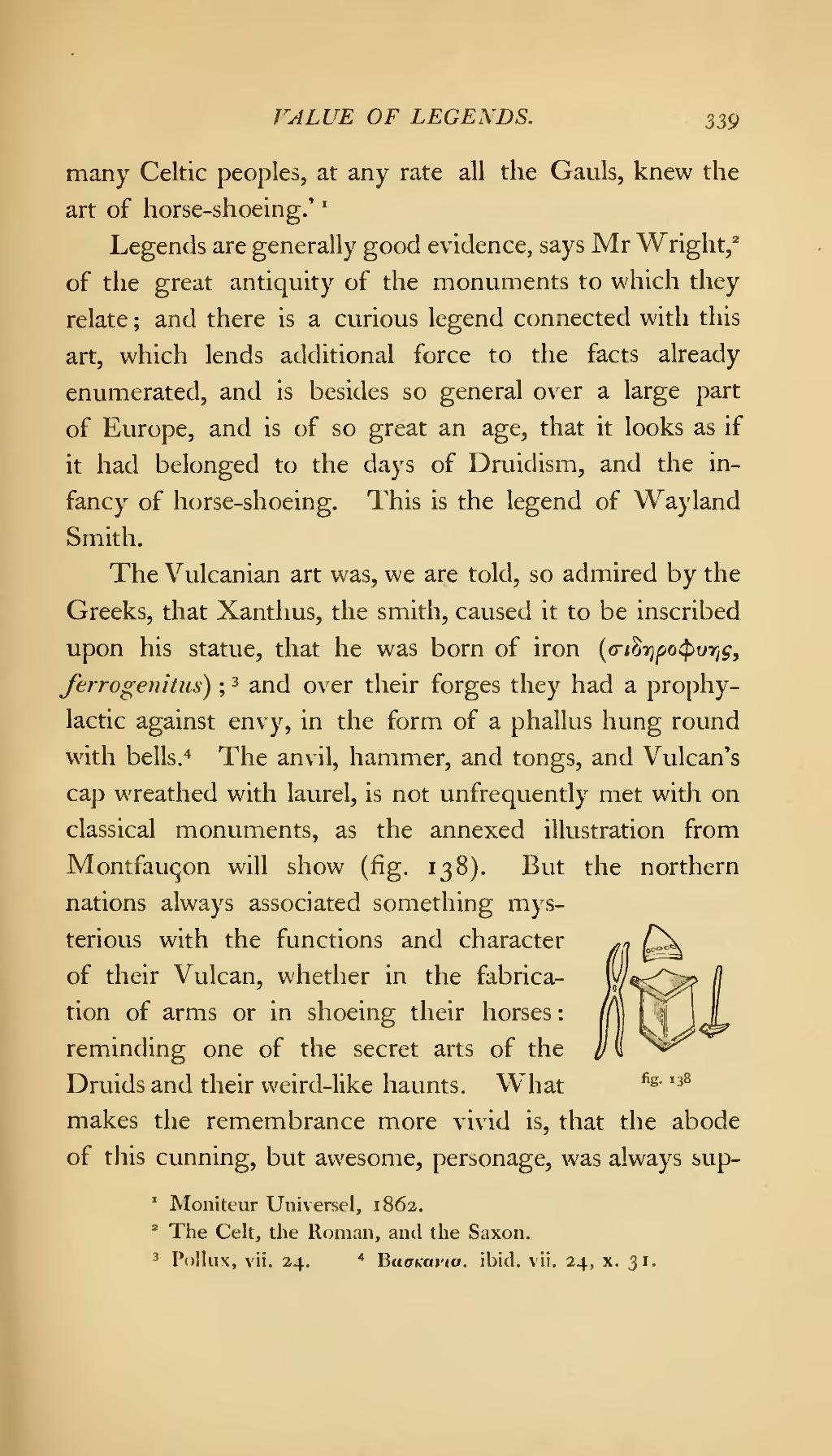many Celtic peoples, at any rate all the Gauls, knew the art of horse-shoeing.[1]
Legends are generally good evidence, says Mr Wright,[2] of the great antiquity of the monuments to which they relate; and there is a curious legend connected with this art, which lends additional force to the facts already enumerated, and is besides so general over a large part of Europe, and is of so great an age, that it looks as if it had belonged to the days of Druidism, and the infancy of horse-shoeing.This is the legend of Wayland Smith. The Vulcanian art was, we are told, so admired by the Greeks, that Xanthus, the smith, caused it to be inscribed upon his statue, that he was born of iron (σιδηροφυης, ferrogenitus);[3] and over their forges they had a prophylactic against envy, in the form of a phallus hung round with bells.[4] The anvil, hammer, and tongs, and Vulcan's cap wreathed with laurel, is not unfrequently met with on classical monuments, as the annexed illustration from Montfauçon will show (fig. 138).
But the northern nations always associated something mysterious with the functions and character of their Vulcan, whether in the fabrication of arms or in shoeing their horses: reminding one of the secret arts of the Druids and their weird-like haunts. What makes the remembrance more vivid is, that the abode of this cunning, but awesome, personage, was always sup-

